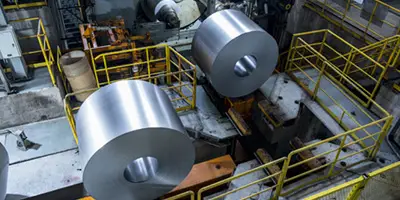ASME B16.5 and ASME B16.47
The
ASME B16.5 standard covers
flanges and flange fittings from NPS ½” to NPS 24″, with pressure ratings of 150–2500. This includes pressure ratings, dimensions, tolerances, materials, markings, and testing. ASME B16.5 and ANSI B16.5 only cover sizes up to 24 inches. For larger flanges, the ASME B16.47 standard covers pipe flanges from 26″ to 60″, with pressure ratings of 75, 150, 300, 400, 600, and 900. ASME B16.47 is then further divided into ASME B16.47 Series A and ASME B16.47 Series B blind flanges and weld neck flanges.
Flanges formerly known as MSS SP-44 are now considered ASME B16.47 Series A flanges, while API 605 flanges are now considered ASME B16.47 Series B flanges. The materials covered by this standard, except for nickel alloys, are the same as those in ASME B16.5. Therefore, they share the same pressure-temperature diagram for flange material selection.
What are the differences between ASME B16.47 Series A and Series B flanges?
ASME B16.47: Primarily specifies large-diameter flanges, including blind flanges and welding flanges, further subdivided into Series A and Series B. The main differences between ASME B16.47 Series A and Series B flanges are as follows:
1.Thickness and Weight: Series A flanges are generally thicker and heavier than Series B flanges, meaning they offer greater strength and higher pressure resistance.
2.External Load: Due to their increased thickness and weight, Series A flanges can typically handle higher external loads than Series B flanges.
3.Cost: Series A flanges tend to have higher manufacturing costs than Series B flanges, which is usually reflected in their market price.
4.Fasteners: Series B flanges require more but smaller fasteners, such as bolts and nuts.
5.Bolt Coil Diameter: The bolt coil diameter of Series B flanges is typically smaller than that of Series A flanges, potentially resulting in a more stable flange with less movement after installation.
RTJ (Ring Joint) Flanges: Series A flanges are defined in ASME B16.47 as being in grades 300 to 900, while Series B flanges do not have these definitions.
Applications: Series A flanges are more suitable for new piping projects or equipment requiring higher pressure resistance and heavier construction, while Series B flanges are more commonly used for refurbishment or replacement work due to their potential cost-effectiveness compared to Series A flanges.

ANSI B16.47 flanges have two series: Series A and Series B. There is also an ANSI B16.5 standard number. Generally, B16.5 flanges are smaller than 24 inches, while B16.47 flanges are larger than 24 inches.
The B16.47 Series A is actually the name given after the MSS SP44 standard flange was incorporated into the ANSI flange system, while the Series B is the name given after the API 605 standard flange was incorporated into the ANSI flange system. This explains the relationship between MSS SP44, API 605 flanges, and ANSI B16.47.
Regarding whether A-series and B-series flanges are interchangeable, the answer is definitely no. This must be determined during the engineering design phase. For the same pressure and dimensions, A-series flanges have larger outer diameters, disc thicknesses, and bolt hole diameters than B-series flanges, but fewer bolt holes. This results in B-series flanges being significantly cheaper, more economical, lighter, and requiring less redundancy for the same pressure and dimensions. Generally, A-series flanges may be chosen for projects with stricter requirements, while B-series flanges are more economical. B-series flanges are slightly more commonly used in general pipelines, while A-series flanges are slightly more commonly used in gas pipelines. They are generally not interchangeable.
Domestic standards SH3406 and HG20615 are derived from ANSI B16.47 B-series, which is the API 605 flange standard.
The above explains the relationship and differences between ANSI B16.47 A and B-series flanges.






 English
English Español
Español بالعربية
بالعربية











 Phone :
Phone :  Whatsapp :
Whatsapp :  Email :
Email : 


